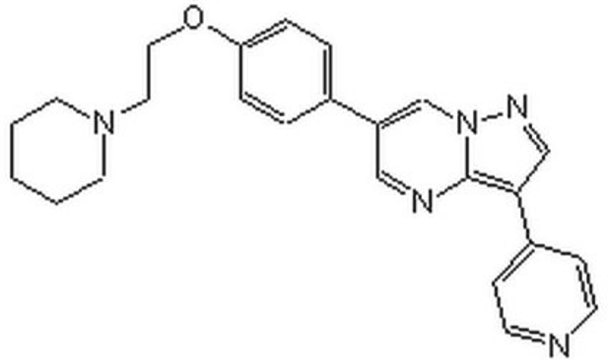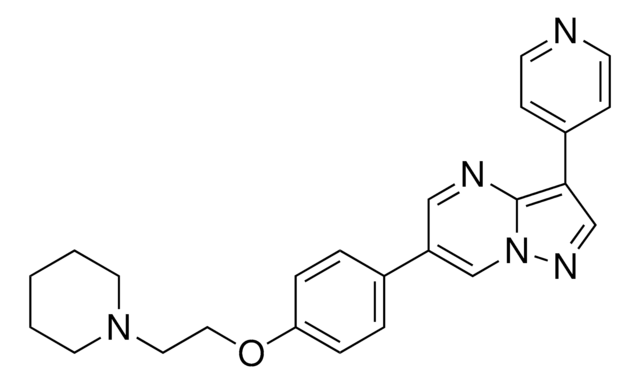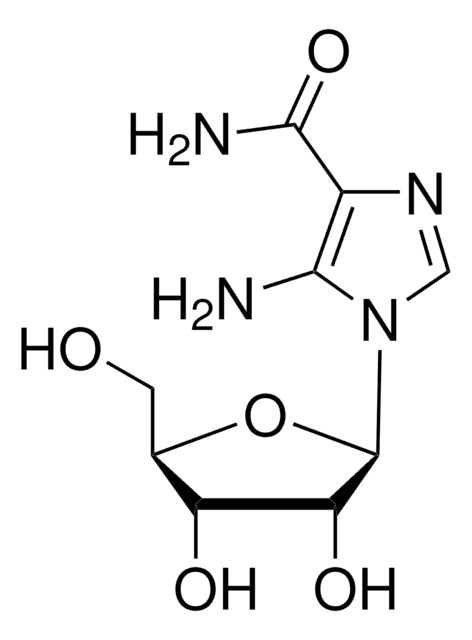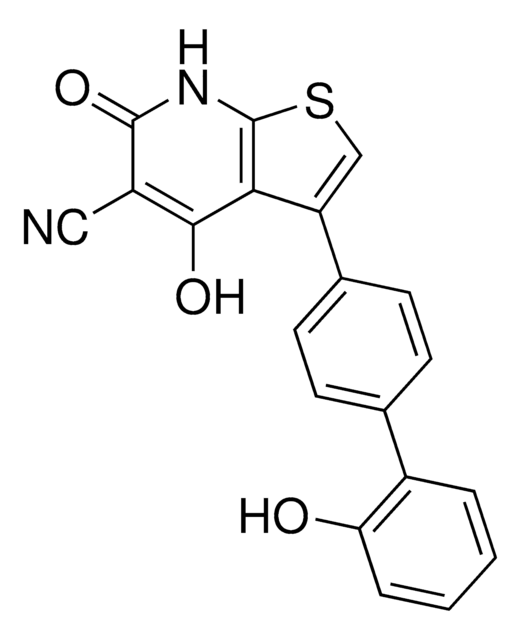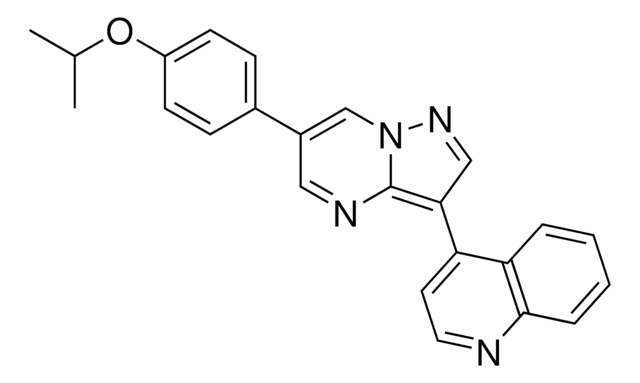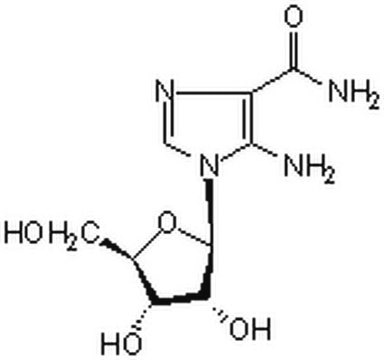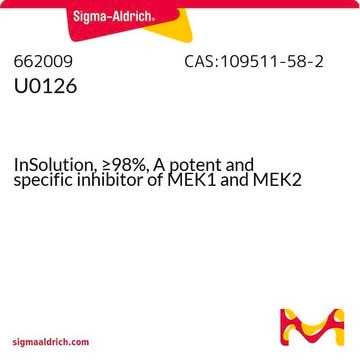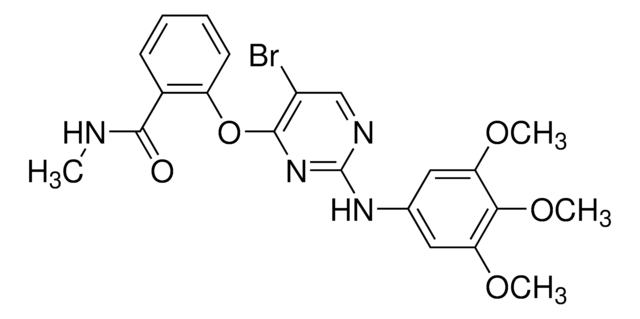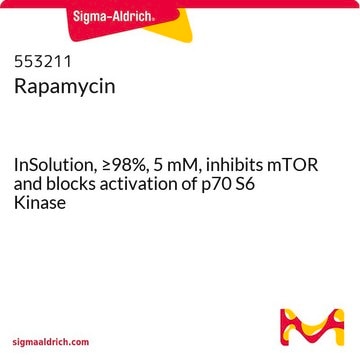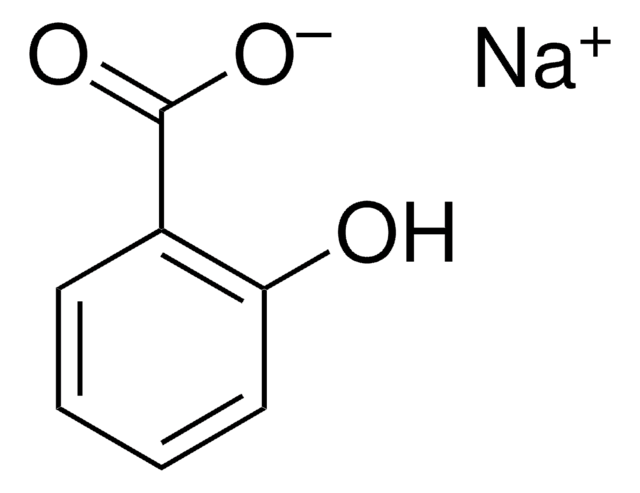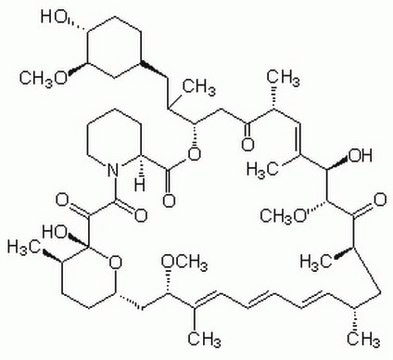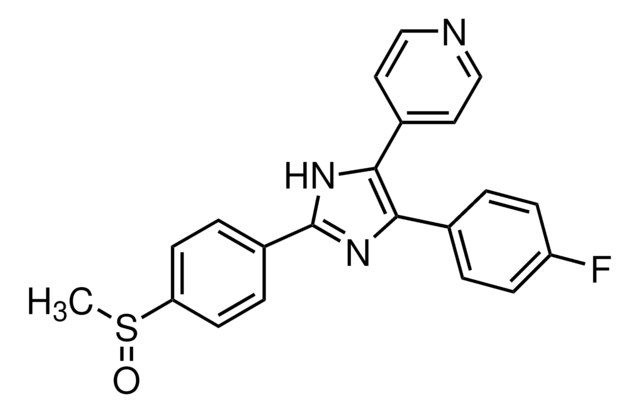171261
AMPK Inhibitor, Compound C
InSolution, ≥95%, 10 mM, AMPK Inhibitor
Synonym(s):
InSolution AMPK Inhibitor, Compound C, Dorsomorphin, AMPK Inhibitor I, BMP Inhibitor I
About This Item
Recommended Products
Quality Level
assay
≥95% (HPLC)
form
liquid
manufacturer/tradename
Calbiochem®
storage condition
OK to freeze
desiccated (hygroscopic)
protect from light
shipped in
wet ice
storage temp.
2-8°C
InChI
1S/C24H25N5O/c1-2-12-28(13-3-1)14-15-30-22-6-4-19(5-7-22)21-16-26-24-23(17-27-29(24)18-21)20-8-10-25-11-9-20/h4-11,16-18H,1-3,12-15H2
InChI key
XHBVYDAKJHETMP-UHFFFAOYSA-N
General description
Biochem/physiol Actions
AMPK
Packaging
Warning
Physical form
Reconstitution
Other Notes
Kim, E.K., et al. 2004. J. Biol. Chem.279, 19970.
Lee, M., et al. 2003. J. Biol. Chem.278, 39653.
Inoki, K., et al. 2003. Cell115, 577.
Fryer, L.G., 2002. FEBS Lett.531, 189.
Zhou, G., et al. 2001. J. Clin. Invest.108, 1167.
Legal Information
Certificates of Analysis (COA)
Search for Certificates of Analysis (COA) by entering the products Lot/Batch Number. Lot and Batch Numbers can be found on a product’s label following the words ‘Lot’ or ‘Batch’.
Already Own This Product?
Find documentation for the products that you have recently purchased in the Document Library.
Customers Also Viewed
Our team of scientists has experience in all areas of research including Life Science, Material Science, Chemical Synthesis, Chromatography, Analytical and many others.
Contact Technical Service